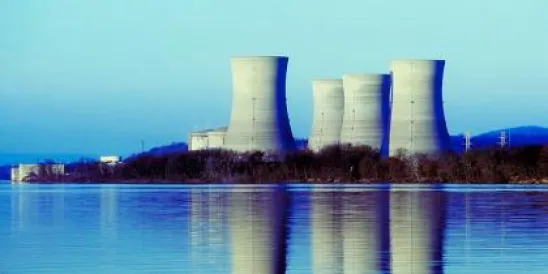Defendants in groundwater contamination cases in California have additional evidence to direct blame where it should be placed – on naturally occurring contaminants. An extensive study by the U.S. Geological Survey (USGS) has determined that natural contaminants are more prevalent than human-made contaminants in California groundwater used for public supply. The study, titled “Metrics for Assessing the Quality of Groundwater Used for Public Supply, CA, USA: Equivalent-Population and Area," authored by Kenneth Belitz, Miranda Fram and Tyler Johnson, was recently published in Environmental Science and Technology. See also USGS. It evaluated the quality of nearly all the groundwater used for public supply during a decade in California and is reportedly the most comprehensive assessment of groundwater in any state to date. Groundwater provides about one third of California's drinking supply and is becoming even more of a hot issue due to current drought conditions.
Overview
In a study conducted as part of the California State Water Board's Groundwater Ambient Monitoring and Assessment Program, the USGS analyzed geographical areas and population as indicators of groundwater quality to capture a more accurate regional picture. Measurements of contaminants were weighted according to the population using the groundwater and the size of the area. This $50 million study used data from 11,000 public supply wells in 87 study areas to evaluate nearly 200 natural and human-made contaminants typically found in untreated groundwater.
Key Findings
As shown in the graph, the study found that natural contaminants, such as arsenic and uranium, occur at high concentrations in about 20 percent of the groundwater (30 percent in desert areas in San Bernardino County). Human-made contaminants, such as nitrate and solvents, occur at high concentrations in only about 5 percent of the groundwater. "High" concentrations are defined as above the Environmental Protection Agency's or the California State Water Board's Maximum Contaminant Levels (MCLs) or other non-regulatory health-based levels where no MCLs exist.

Another example of an unregulated contaminant is manganese, which occurs at concentrations above human health benchmarks in about 5 percent of the drinking water supply.
Although human-made contaminants are not as prevalent at high concentrations as natural contaminants, they were found to occur in locations where large numbers of people rely on groundwater. For example, organic solvents are present in parts of the heavily populated San Fernando, San Gabriel and Santa Ana basins. The presence of solvents at high concentrations in these basins has long been known, and the problem is actively managed by local and regional agencies.
High concentrations of nitrates in groundwater are generally associated with past use of fertilizers, animal manure and septic systems. Consequently, high nitrate concentrations are found in areas where the past land use was agricultural, not just in areas that are currently agricultural. Examples include parts of the Santa Ana Basin.
In current agricultural areas, high nitrate concentrations are not currently prevalent at the depth zone used for public supply but may increase as water moves from the land surface further downward in the groundwater. Examples include parts of the San Joaquin and Sacramento valleys.
Conclusion
This study could bolster what many responsible parties have been saying all along, that they did not generate many of the contaminants found in the groundwater under their operations and that they should not be held responsible to pay for the removal of such naturally occurring contaminants.



 />i
/>i
